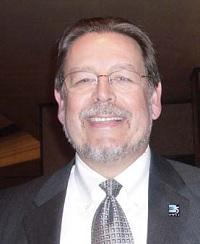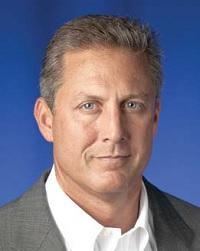ONE Media And Next-Gen Broadcasting
BALTIMORE—From TV’s earliest days—when a small statue of Felix the Cat was spun on a record turntable during RCA’s first experimental broadcast from New York’s W2XBS—until today, when many viewers watch content on an HD screen that takes up half of a living room, the distribution model has stayed basically the same.
Technical advances aside, it’s not much different than still “one-to-many” broadcast: It’s basically tower-to-device, much like the old-school broadcast tower-to-set-top box or TV via outdoor antenna.
But in today’s expansive multiplatform universe, broadcasters are concerned with more than the traditional distribution method, as the quickly multiplying millions of viewers are receiving content not only on those big HD screens, but on much smaller screens on PCs, tablets and smartphones.
Hence the founding of ONE Media LLC, a recently-debuted joint venture between Sinclair Broadcast Group and Coherent Logix, an Austin, Texas-based developer of software- defined radio technology. The group, which is being led by Tommy Eng, a founding partner of IT venture capital investment firm EXA Ventures, has been assigned the task to create a next-generation broadcast platform, and is billed by Executive Vice President and CTO Kevin Gage as “a think tank to provide an asset that has been lacking in our industry.”
NEW FOUNDATION
Gage laid the foundation for ONE Media (Open Network Enabled), which he joined in June, while CTO at NAB. “My goal there was to marshal NAB’s and the broadcast industries technical resources, as best I could within a membership organization. So, for the past three years, I was focused on developing an innovation framework with a corporate startup mindset,” he said.

Mark Aitken However, he felt that innovation in some ways is constrained in that environment. “Generally, you had a tower and receiver, and sent programs and advertisements to a single market,” said Gage. “That was it.”
That outlook is one reason Hunt Valley, Md.- based Sinclair started to invest in ONE Media, according to Mark Aitken, vice president of advanced technology for Sinclair Broadcast Group, the largest owner of local TV stations in the United States. “The nature of our business hadn’t changed much in about 70 years,” he said. “It was only about, ‘How do I get my content into the living rooms of America?’
Get the TV Tech Newsletter
The professional video industry's #1 source for news, trends and product and tech information. Sign up below.
“But obviously,” Aitken added, “there has been a dramatic change in the nature of consumption of content in today’s multiplatform universe.”
Gage’s background is in strategic and technical development, and he’s “looking at our timeline going forward. What that’s really about today,” he said, “is separating content from the ability to distribute. ONE Media’s goal is to develop a technological platform to better enable” today’s distribution needs.
THE IDEA
The standard that TV engineers are working with today is ATSC 1.0, an RF technology they have been using since 1995. “It gives us digital TV in the U.S.,” said Gage. “It was very narrowly defined as to what it could and could not do—tall tower to roof-top antenna.”
Then, however, came the need to get content to mobile devices and portable devices; however, ATSC 1.0 was not developed for these new consumer products.

Kevin Gage “So what we’re doing at ONE Media is offering a flexible broadcast toolkit for ATSC 3.0, the next-generation TV standard,” Gage said. “Hopefully, we will learn how to work among other distribution standards, yet offer a flexible framework, with a toolkit, that will allow for advancing new technologies.”
The nuance, said Gage, is that “there was a decision in the U.S. to rush into the market with 8-VSB; (C)OFDM was also in development at that time, but was not quite as mature as 8-VSB. The rest of the world went a different direction. Now the world uses (C)OFDM, which is what our toolkit is designed around.”
ONE Media is also going with an Internet Protocol transport. “Everything that goes over the Internet uses IP, we’ve optimized our platform for one-to-many focused distribution,” Gage said. “So we’re going from a constrained solution to a flexible framework that can deliver bits for a variety of content; TV shows, movies, music services, data, etc. It can scale from 10 to 100,000 to 1 million or more people receiving the content.”
A Wi-Fi or LTE network can only accommodate so many users per transmitter, according to Gage, “but ONE Media’s platform has no restraint as to how many people can get a signal, provided they can receive it. Today, signals are constrained by what ATSC 1.0 can support. ONE Media’s new technology is designed by broadcasters, for broadcasters in today’s market reality.”
RF: STILL THE ONE
Gage said ONE Media encompasses a team of 30 engineers, with 40 others from industries outside of the TV industry, like chip designers, RF transport, handset builders, etc., “who can bring experience and perspective to new TV technologies for the next generation,” he said. “We looked at what’s out there today, what worked and what didn���t, then started working on the problems. What we often found were actually perfectly good designs for the late ’90s, but they don’t support the flexibility we need today.”
Rounding out the ONE Media team, broadcast veteran Jerald Fritz recently joined the company as executive vice president for strategic and legal affairs to lead non-technical efforts. Fritz has been a long-time player in leading and shaping many broadcast industry initiatives, according to Aitken.
ONE Media has been creating models, running simulations, building hardware “and transmitting in the laboratory to move technology to the future,” he said. A dedicated broadcast transmission facility is being built in Austin, Texas to fully support broadcast “over-the-air” system integration. “We have an aggressive schedule from concept to proven operational hardware by the end of this year,” Gage said. “Every milestone has been met.
“We’re still in the early stages of next-generation ATSC 3.0, but because we have this great team of engineers, we have the ability to move quickly and test things out,” Gage continued. “Broadcasting is the original wireless industry—transmitting waves via RF—and the biggest enabler of the new demands will also be RF technology, because it can get the most content to the most people quickly. That’s still what we need to do in this day and age.”
Mark R. Smith has covered the media industry for a variety of industry publications, with his articles for TV Technology often focusing on sports. He’s written numerous stories about all of the major U.S. sports leagues.
Based in the Baltimore-Washington area, the byline of Smith, who has also served as the long-time editor-in-chief for The Business Monthly, Columbia, Md., initially appeared in TV Technology and in another Futurenet publication, Mix, in the late ’90s. His work has also appeared in numerous other publications.

